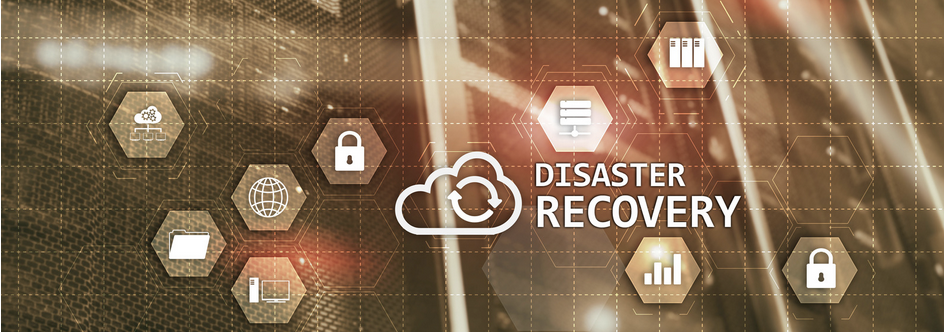
Software development life cycle (SDLC) refers to the process that companies use to develop software applications. The SDLC is designed to provide a structured approach to projects, but it can also present many challenges. Here are some of the key issues businesses face with SDLC.
High Cost
Software development projects involve a lot of resources, including time and money. Even with an effective SDLC strategy in place, the cost of developing applications can be substantial.
Scope Creep
Software projects often start out small but quickly grow as developers add features and functionality. This is known as scope creep, and it can cause delays and budget overruns if not managed properly.
Poor Documentation
Documentation is an essential part of the SDLC, but many companies struggle with creating and maintaining accurate documentation. Without good documentation, it can be difficult to track progress or troubleshoot issues.
Quality Assurance Issues
Quality assurance is critical for successful software development, yet many organizations struggle with this step in the process. Poor QA can lead to bugs and other defects, which can cause delays and customer dissatisfaction.
Security Issues
Security should be a primary concern in any SDLC strategy, yet many businesses overlook this important step. It’s essential to ensure that applications are secure from malicious attacks or data breaches.
Software development is a complex process, but with an effective SDLC strategy in place, companies can develop effective solutions that meet customer needs. It’s important to plan ahead and take into account all the potential challenges associated with SDLC. By addressing these issues upfront, businesses can ensure their applications are developed and deployed in a timely manner. With proper planning and resources, organizations can create successful software projects that meet customer needs and expectations.

Given the complexities of Kubernetes, it’s no wonder that many organizations struggle to maintain their deployments. Fortunately, there are a number of best practices and strategies available for resolving common challenges faced in Kubernetes environments.
Use Kubernetes ConfigMaps And Secrets
Kubernetes offers two ways to store configuration information and secrets: ConfigMaps and Secrets. With ConfigMaps, you can externalize application configuration from the container images for better portability. This allows for different configurations to be used between environments without having to create multiple versions of the same code base. Secrets enables secure storage and access to sensitive information, such as credentials and API tokens. It is important to note that all of these resources should be treated with the utmost security as they contain confidential data.
Leverage Resources Efficiently
Kubernetes offers the ability to run multiple services in a single cluster and make sure that resources are allocated optimally across them. This allows for more efficient usage of system resources, as you can ensure that each service has enough CPU and memory resources available to it while still ensuring an optimal utilization of those resources. Automate Kubernetes Deployments Kubernetes deployments can be complex and require a lot of manual work to configure and maintain them. To simplify this process and ensure that updates are rolled out quickly, you should consider automating these deployments. This will ensure that your applications are always running the latest version of the software and that any updates or changes can be rolled out quickly and without manual intervention.
Monitor Performance
Monitoring performance in Kubernetes is essential to ensuring that your applications are running optimally and meeting the expected SLAs. It is important to have visibility into how resources are being used and how the services are performing. By monitoring performance, you can quickly identify any issues before they become major problems.
Use Kubernetes Operators
Kubernetes operators allow users to automate day-to-day operations tasks related to their applications running on Kubernetes. These operators can be used to manage the deployment, scaling, and configuration of applications running in Kubernetes. The operators also provide an extra layer of abstraction so that users don’t have to worry about understanding all the complexities of the underlying system. By using these operators, you can easily manage your applications on Kubernetes and ensure that they are running optimally.
Utilize Community Resources And Tools
The Kubernetes community is one of its greatest strengths, as it offers a wealth of advice and resources to help users better understand the platform. Whether through blogs, newsletters, forums, or user groups, there is a constant supply of knowledge and advice available to help users get the most out of Kubernetes. There are many open-source tools and projects that can be used to make managing applications on Kubernetes easier. Taking advantage of these resources can help you quickly gain proficiency in the platform.
Interested in learning more?

Cloud computing’s popularity continues to grow as businesses look to leverage the cloud’s cost savings, scalability, and flexibility. However, it’s important to ensure that your company remains grounded when making the move. Here are five tips for keeping your company grounded with cloud computing.
Prioritize Security: Cloud computing can present some security risks, so it’s important to prioritize security and make sure that your data is protected. Invest in layers of security, such as multi-factor authentication, encryption, and firewalls.
Maintain Control: Don’t give up control of your data or services just because they are in the cloud. Discuss with your cloud provider who has control over what, when, and how things can be changed.
Develop a Disaster Recovery Plan: In the event of an outage, you need to have a plan in place for how you will recover your data and services as soon as possible. Make sure that your cloud provider has tested and validated their disaster recovery plan before signing any contracts.
Monitor Performance: In order to ensure that you are getting the most out of your cloud services, it’s important to monitor and measure the performance of the services. This will allow you to identify potential issues or areas for improvement so that you can make adjustments as necessary.
Utilize Automation: Cloud computing can be complex and time-consuming. By utilizing automation, you can streamline the process and free up resources to focus on other areas of your business. Automating processes can allow you to reduce errors and increase efficiency.
Take Advantage of Different Cloud Offerings: There are many different cloud offerings available today, so make sure to take advantage of the different options available. Consider the features, scalability, and cost when making your decision.
Stay Up-to-Date: Cloud computing is evolving, so keeping up-to-date on new technologies and trends is essential. Make sure that you are taking advantage of all the latest features and tools that are available to ensure that your company remains competitive.
By following these tips, you can help keep your company grounded with cloud computing and ensure that you’re getting the most out of the technology.

When it comes to disaster recovery, there are a few things you need to consider. To ensure that your business is well-protected and prepared for the worst, here are a few tips to help you choose the right Disaster Recovery solution for your organization.
Identify Your Business Needs: Make sure you know what kind of backup system you need and how much data your business needs to store. This will help you narrow down the type of solution that best fits your organization’s needs.
Determine Your Resources: Make sure you have enough resources to implement the desired disaster recovery plan and ensure it is up-to-date with the latest technologies.
Establish a Backup System: Establish a reliable backup system that can store and protect data in case of an emergency. Make sure the solution is scalable and cost-effective for your business needs.
Explore Your Data Storage Options: Evaluate different options when it comes to data storage solutions, such as cloud-based services, on-premise servers, or hybrid environments.
Consider Security: Take into account any security measures that need to be in place for your data, such as encryption or authentication. Make sure the disaster recovery solution you choose has these features implemented.
Utilize Automation Tools: Utilize automation tools and processes to ensure your disaster recovery plan is being implemented correctly and efficiently. This can make the process of recovery much smoother.
Test Your Disaster Recovery Plan: Make sure you regularly test your disaster recovery plan to ensure it is up-to-date and working properly. This will give you peace of mind that your data is safe and secure in case of an emergency situation.
Monitor Data Usage: Monitor data usage and trends to better understand when and how your data needs protection. This will also help you determine which disaster recovery solution is best for your organization.
By following these 8 tips, you can make sure that the Disaster Recovery solution you choose will be effective in protecting your business’s data in case of an emergency situation. Make sure to do the necessary research before selecting the best solution for your organization. With a reliable disaster recovery plan in place, you can rest assured that your business is well-prepared for any disaster and ready to get back up and running quickly in the case of an emergency.

VOIP phone systems are beneficial for businesses of all sizes. A VOIP system can provide a considerable cost savings compared to using traditional telephone services and can offer additional benefits such as increased flexibility and scalability. Here are seven of the major advantages that come with choosing a VOIP phone system.
VoIP systems are mobile-friendly, enabling employees to stay connected no matter where they are. Most hosted VOIP services allow users to make and receive calls from their tablets or smartphones using the same business number as their desk phone. This makes it easier for employees to always stay in contact with customers, vendors, and colleagues when on the go.
Have more control over the features you use and pay for. With a hosted VOIP system, you can usually choose which features to add or remove from your phone system as needed. You may also be able to choose different levels of service, depending on what type of system you’re looking for. This makes it easier for businesses to customize their phone systems based on their budget and specific needs.
Improved customer service. With a hosted VOIP system, customers can get in touch with your business quickly and easily. A good phone system should provide features like automated attendants, click-to-call options, and voicemail-to-email, making it easier for customers to reach the right person within your organization. You can also use features like call forwarding and conference calls to ensure no customer inquiry is left unanswered.
Increased scalability. If your business is growing, VOIP systems are easier to scale up or down as needed. Because most hosted systems are based in the cloud, you won’t have to worry about buying additional hardware when you need more lines or features. As your business grows, you’ll be able to seamlessly add new users and features without any additional hassle. Additionally, it’s usually much easier to move a hosted VOIP system from one location to another if needed. This makes it the ideal choice for businesses that are looking for flexible phone systems that can accommodate their changing needs.
Mobility. With a VOIP phone system, you can access your business phone from any device. This makes it easy for remote workers to stay connected and allows for more flexibility in terms of where your calls can be made or received. You don’t have to worry about being tied down to one physical location, making it easier to work on the go and still stay up-to-date with all of your customer communications.
Cost Savings. A VOIP phone system is much cheaper than traditional landlines since it uses an Internet connection as its source instead of dedicated phone lines. This will allow you to save money on long-distance charges, line rentals, and installation costs that would otherwise take away from your bottom line. Additionally, VOIP phone systems often include features like video conferencing and voicemail-to-email that are usually not included in traditional landlines.
Easy Setup. Setting up a VOIP phone system is incredibly straightforward since most of the hardware is already built-in to your current network infrastructure. All you have to do is connect it to your existing router and configure the software, making it easy for anyone with basic networking knowledge to get started quickly. With a few clicks, you can be up and running in no time. This makes it an ideal solution for businesses needing a quick and straightforward setup process without lengthy installation times.
Download our free guide for more information!

When it comes to cloud migration, safety is essential. Companies need to ensure that their data and applications are secure and compliant with any applicable regulations. The best approach for a safe cloud migration involves careful planning and research. Here are 7 tips for migrating to the cloud safely.
Ensure Your Firewall Is Updated And Secure
Your firewall should be configured to allow only the essential traffic that your cloud applications need to function. Before migrating to the cloud, make sure you have a strong firewall in place with an appropriate policy. Additionally, ensure that all of your security patches are up-to-date and running smoothly.
Test Your System For Vulnerability
Once you have migrated to the cloud, it is important to test your system for vulnerabilities and security risks. Use automated tools and services to scan your system for malware and other threats. Additionally, perform routine penetration tests to make sure that your system remains secure.
Update Your Security Policies
As you move data and applications to the cloud, it’s important to update existing security policies with new guidelines for protecting sensitive information on cloud infrastructure. Create specific access control rules for users who can access data and systems, as well as audit policies that track user activities.
Automate Where Possible
Automation can reduce the amount of manual labor required for a successful cloud migration and help ensure tasks are completed quickly and accurately. Consider automating tasks such as provisioning, configuration management, and deployments to save time and money while reducing human error. This will also ensure that you’re able to focus on higher-value activities such as refining workloads, testing operations, and ensuring security compliance.
Leverage Cloud-Native Services
Many cloud providers offer services specifically designed for their infrastructure that can improve performance, availability, and scalability. By taking advantage of these services, you can simplify the migration process and get more value out of your cloud deployment. Examples include Amazon’s DynamoDB NoSQL database, Microsoft Azure App Services for creating applications, and Google Cloud Platform’s machine learning capabilities.
Define A Timeline
Set specific goals and deadlines for each stage of the migration process, including backup/restoration times, testing dates, and training schedules. This will ensure you stay on track and don’t miss any critical steps along the way. Breaking down tasks into smaller chunks also makes it easier to monitor progress. Finally, consider taking additional steps, such as dedicating a specific team to the cloud migration or hiring a third-party consultant for assistance.
Plan For Contingencies
As with any project, there’s always the potential that something could go wrong during your cloud migration. That’s why it’s important to have backup plans and strategies in place just in case you need to troubleshoot or address any issues that arise. Make sure you have an effective system in place for monitoring the health of your cloud platform and services on an ongoing basis so you can catch any potential problems before they become full-blown disasters. That way, if anything does happen, you’ll be prepared to respond quickly and effectively.
Want to learn more?

Having a Disaster Recovery Plan (DRP) is essential to minimizing the impact of unexpected events that could disrupt your business. Without a DRP, you may be unable to resume operations quickly and can suffer costly delays or even permanent closure. A well-thought-out DRP will help you identify potential disaster scenarios, plan for their occurrence, and determine the necessary steps to ensure your business can resume operations efficiently and effectively. Here are seven steps to keep in mind.
Assign roles and responsibilities – Identify the internal and external personnel who will be involved in your Disaster Recovery Plan, assign them specific roles and tasks, and make sure they’re all aware of their individual responsibilities. Document these roles clearly within the plan itself to ensure that everyone is held accountable throughout the process.
Establish a chain of command – This should be clearly outlined in your Disaster Recovery Plan so that it’s easy for staff to know who they should contact or look to for information during times of crisis. The chain of command should also detail the decision-making process so everyone remains on the same page when it comes to implementing solutions in the event of a disaster.
Develop communications procedures – Develop a protocol for communicating key information related to the Disaster Recovery Plan to relevant personnel, both internally and externally. This should include details on how communication will take place in the event of a disaster, who will be responsible for passing on messages, and what type of language should be used when doing so. Ensuring that information is disseminated quickly and accurately is essential for effective disaster management.
Establish testing procedures – Regularly test your Disaster Recovery Plan to ensure that it’s up-to-date and effective. During these tests, staff can also familiarize themselves with the plan and learn their roles and responsibilities as part of the process. Scheduling these tests in advance will not only help to increase preparedness but also allow for any changes to be made in a timely manner.
Document results and updates – As part of your Disaster Recovery Plan, it’s important to document all the results from tests and updates that are made over time. This will help identify areas where improvements can be made and ensure that everyone involved is on the same page when it comes to implementing solutions in an emergency situation. Furthermore, the documentation should include information on how often reviews and revisions need to take place, as well as contact details for key personnel responsible for managing different aspects of the plan.
These seven steps are essential for building an effective Disaster Recovery Plan that will help protect your business from potential disasters. By assigning roles and responsibilities, establishing a chain of command, developing communications procedures, testing regularly, and documenting results and updates, you can ensure that you’re always prepared in the event of an emergency.


The Fourth of July may be a day of barbecues and fireworks, but it’s also an important day in United States history. This Independence Day marks the adoption of the Declaration of Independence on July 4, 1776, by which thirteen colonies declared their independence from Great Britain. Here are some more fun facts about the holiday:
The Fourth of July, also known as Independence Day in the United States, has been celebrated since 1777. This holiday marks the day when the Second Continental Congress adopted the Declaration of Independence from Great Britain in 1776.
One of the most popular symbols for this holiday is the American flag – a tradition that dates back to 1777 when it was first flown in Philadelphia.
The first Fourth of July celebration held on the White House lawn was hosted by President John Adams in 1798.
The traditional Fourth of July barbeque is thought to have been started by Thomas Jefferson, who held the first annual barbeque at Monticello in 1802.
The first public Fourth of July fireworks display was held in Philadelphia in 1777 – the day after the Declaration of Independence had been signed.
John Philip Sousa, known as “The March King,” composed a march for the holiday entitled “The Stars and Stripes Forever,” which became a staple of Fourth of July celebrations across the country.
The first hot air balloon flight in America took place on the Fourth of July in Paris, France, in 1783, by Jean-Pierre Blanchard and John Jeffries.
Since 1941, the National Independence Day Parade has been held annually in Washington, D.C., usually on the morning of the Fourth of July.
The Liberty Bell was rung on the first Fourth of July, signifying the news that America was now an independent nation!
Every year, millions of Americans celebrate Independence Day with fireworks, parades, barbecues, and other festivities. It is often considered one of the most important holidays in the United States.
Happy 4th of July from everyone at Alto9!

Containers can be used to deploy applications across multiple platforms and environments, making them highly scalable and portable. This makes it easier for developers to manage application lifecycles and reduce maintenance overhead. Containers also allow for easier collaboration between developers, making it possible to share code across multiple projects without affecting other applications. This makes it easier to keep track of application dependencies and versioning and ensure that the applications work in different environments. Container technology has revolutionized the way applications are developed, shipped, and deployed, making it simpler to create highly available, secure applications that can be deployed on any platform.
Container Security Boundaries and Risks
Containers are rapidly becoming the preferred method for deploying applications and services, but like any technology, they’re not without security risks. Container security boundaries help to mitigate these risks by creating a secure layer between containerized applications and their underlying infrastructure. This layer can limit access to resources and prevent malicious activity from occurring within the environment.
However, it is important to note that while container security boundaries provide a level of protection, they should not be seen as a complete replacement for other security measures, such as endpoint security or network segmentation.
Containers or VMs?
Choosing between containers and virtual machines (VMs) can be a difficult decision for organizations. Both technologies have benefits, but there are significant differences in their architecture and usage.
Containers are self-contained software packages that contain everything an application needs to run, including the code, configuration files, libraries, and other dependencies.
VMs, on the other hand, provide a fully virtualized environment that includes the application code and an entire operating system. VMs are much more resource-intensive than containers and can take longer to deploy.
Ultimately, the decision will depend on the specific needs of your application and the trade-offs between cost and performance.
Containers Can Be Messy
Containers can be a great tool to help keep your environment organized and efficient. However, they can quickly become messy and cluttered if not managed properly. Here are some best practices for keeping containers clean:
- Consolidate resources into groups with the same requirements (e.g., memory, CPU, etc.). This makes it easier to manage them as a group and will help reduce clutter.
- Don’t keep containers running when they are not in use. This can cause them to take up unnecessary resources and slow down other processes.
- Regularly clean up unused images or containers that are taking up space. Keeping your container environment tidy helps to prevent errors due to conflicting dependencies, out-of-date images, and other issues.
- Utilize version control systems such as git to keep track of changes made to your containers. This makes it easier to roll back changes if necessary and keeps the environment organized.

Cloud security tools and technologies have become an increasingly important element of many organizations’ overall IT security strategies. From encryption to identity management and identity protection, these tools provide the necessary layers of security that help protect data and applications from malicious actors. Here are 10 types of cloud security tools and technologies:
Encryption – Encryption is a key element of cloud security. It ensures that data stored in the cloud is not accessible to unauthorized parties and prevents sensitive information from being read or modified.
Access control – Access control tools are used to only allow authorized users access to an organization’s applications or data stored in the cloud. These tools could include authentication methods such as passwords, two-factor authentication, biometrics, or even physical tokens.
Identity and access management – Cloud-based identity and access management solutions are designed to manage the identities of users who have access to a cloud environment. These tools allow administrators to set up different levels of authorization and control access to applications and data in the cloud based on user roles.
Network security – Network security tools are designed to prevent unauthorized access and protect data as it travels over the network. These tools can include firewalls, intrusion detection systems, and other network security protocols.
Logging and monitoring – Cloud-based logging and monitoring solutions provide visibility into how applications are used, who is accessing them, when they’re being accessed, and where the access is coming from. These tools can alert administrators to suspicious activity or unauthorized access attempts.
Data loss prevention – Data loss prevention (DLP) solutions are designed to detect and prevent data leakage in cloud environments. These tools can be used to detect sensitive information as it’s being transmitted and block it from leaving the network if necessary.
Data backup and recovery – Cloud-based data backup and recovery solutions are designed to ensure that critical data is backed up, so it can be restored in case of a failure or security breach. These tools can also help organizations quickly recover from disasters such as floods, fires, or ransomware attacks.
Security analytics – Security analytics tools use artificial intelligence and machine learning to analyze data from cloud environments, detect anomalies, and alert administrators of potential security threats.
Identity protection – Identity protection solutions are designed to protect users’ identities from being stolen or compromised in a cloud environment. These tools can monitor user activity and detect signs of identity theft or fraud.
Risk assessment – Cloud-based risk assessment tools can help organizations identify any potential security weaknesses in their cloud environment, so they can correct them before a breach or attack takes place. By proactively identifying and addressing risks, organizations can reduce the chances of a successful attack.
These 10 cloud security tools and technologies are essential for protecting data from malicious actors. When combined with strong user policies and procedures, these tools can significantly reduce the risk of a successful attack against an organization’s cloud environment.

